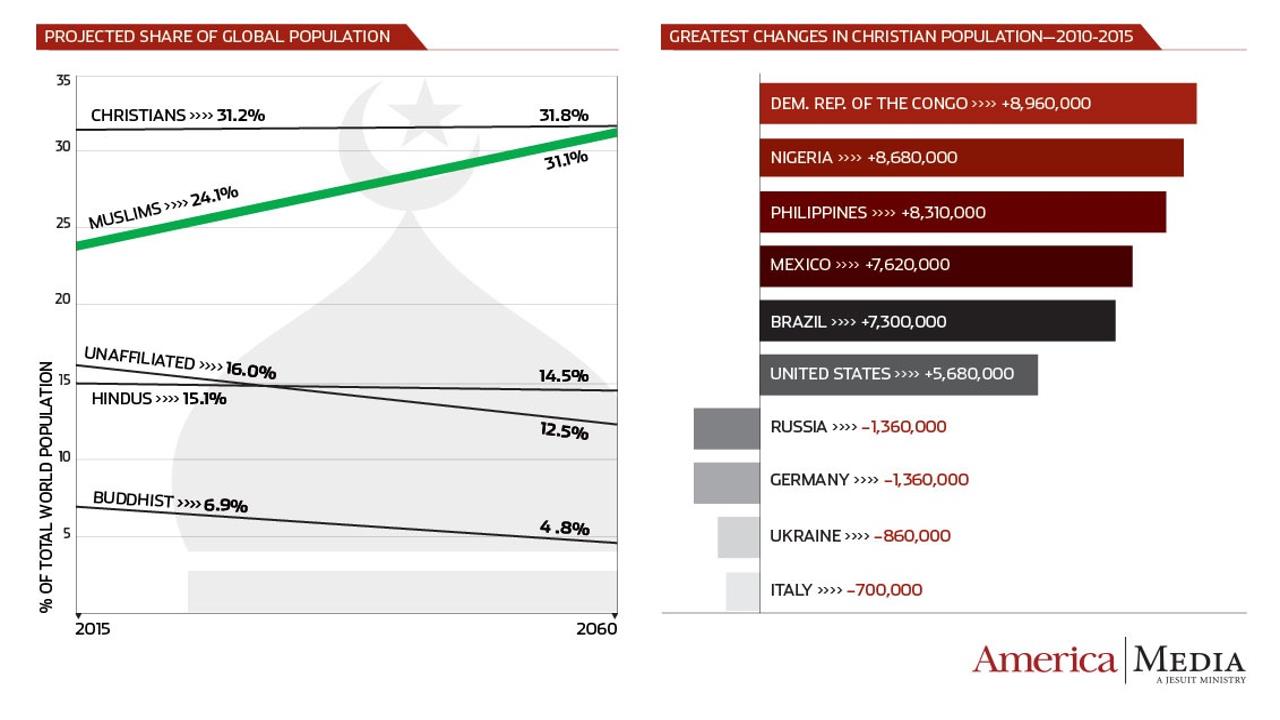Video:
Take our online poll:
AI Analysis:
Here are some of the countries with the highest Muslim populations:
1) Indonesia: Home to the largest Muslim population in the world, with over 200 million Muslims, making up about 12-13% of the global Muslim population.
2) Pakistan: The second-largest Muslim population, with approximately 220 million Muslims.
3) India: While India is a predominantly Hindu country, it still has a significant Muslim population, estimated at around 200 million Muslims.
4) Bangladesh: Has a substantial Muslim population, with around 160 million Muslims.
5) Nigeria: In Africa, Nigeria has one of the largest Muslim populations, with roughly 100 million Muslims.
6) Egypt: Egypt has a large Muslim population, estimated at around 90 million.
7) Iran: With a predominantly Shia Muslim population, Iran is home to approximately 80 million Muslims.
8) Turkey: Turkey has a significant Muslim population, with around 80 million Muslims.
9) Algeria: Algeria's Muslim population is estimated at around 70 million.
10) Morocco: Morocco has a sizable Muslim population, with approximately 35-40 million Muslims.
These countries historically have relatively high Muslim population growth rates:
1) Niger: Historically had one of the highest growth rates globally, often exceeding 3% annually.
2) Afghanistan: Experienced growth rates around 2-3% annually.
3) Chad: Growth rates typically ranged between 2-3% per year.
4) Mali: Saw growth rates generally between 2-3% annually.
5) Uganda: Growth rates were often around 3% annually.
6) Yemen: Growth rates historically around 2-3% per year.
7) Somalia: Growth rates ranged between 2-3% annually.
8) Sudan: Growth rates varied but often fell between 2-3% per year.
9) Djibouti: Historically had growth rates around 2-3% annually.
10) Iraq: Growth rates have historically ranged between 2-3% per year.
These countries were among those with significant Muslim populations and relatively high fertility rates, contributing to their growth. However, it's essential to note that population growth rates can change over time due to various factors including changes in fertility rates, government policies, socioeconomic developments, and other demographic factors. There might have been shifts in these rankings since then.
Chart:

References:


Comments